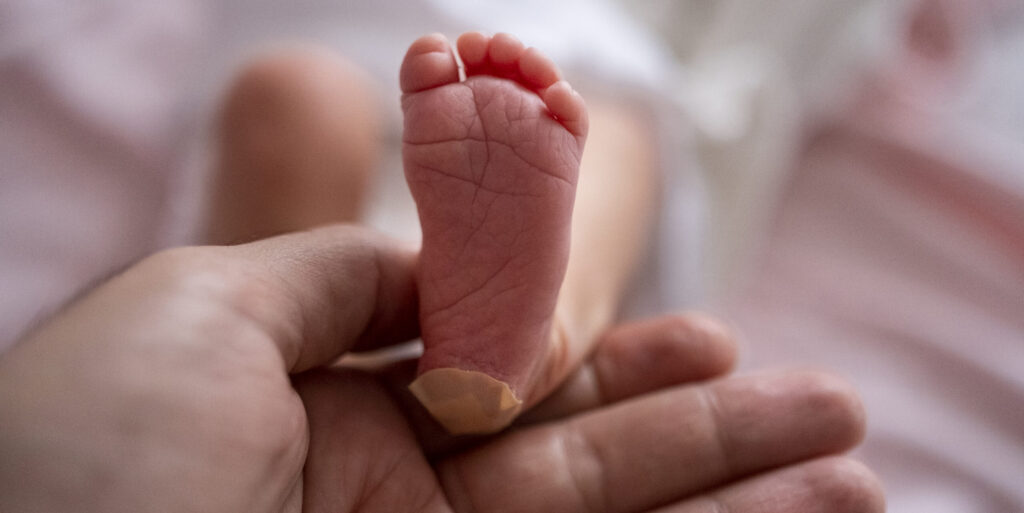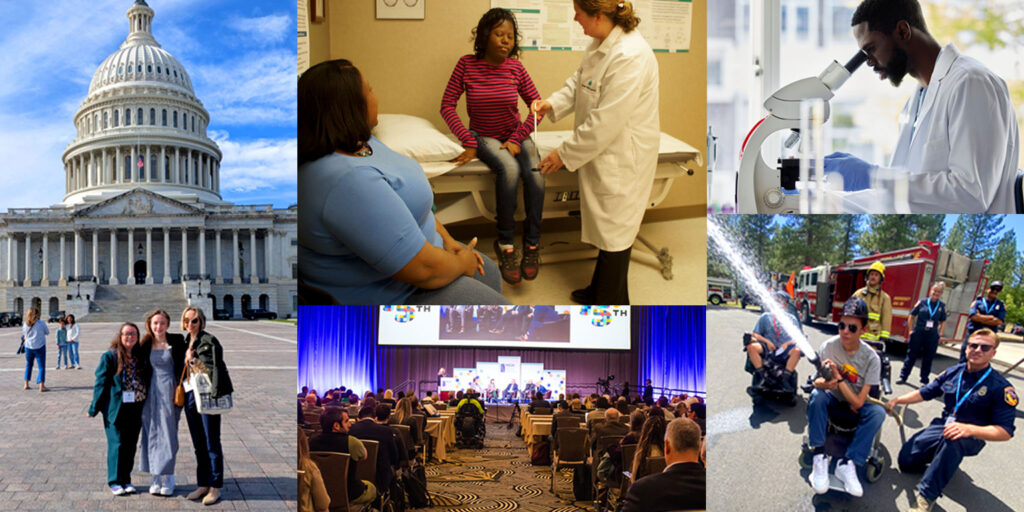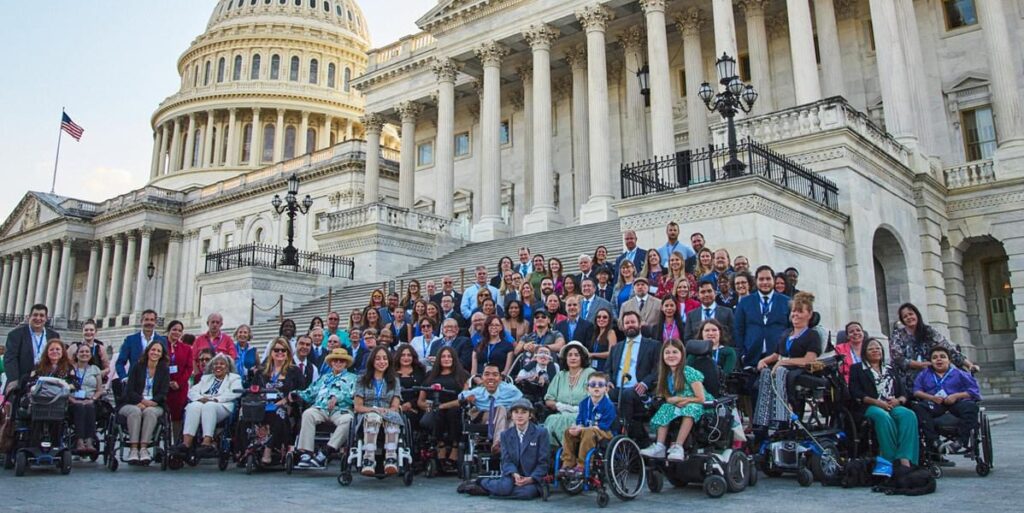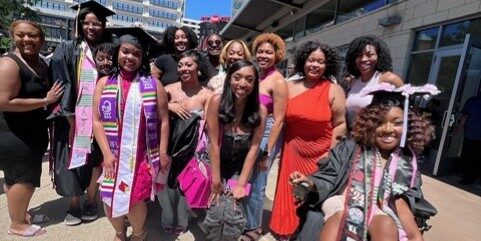
MDA Ambassador Guest Blog: The Intersectionality of Identities as a Black Woman Living with a Disability
By Gabrielle Runyon | Wednesday, February 5, 2025
5 Second Summary
MDA Ambassadors play an essential role in furthering MDA’s mission while representing and empowering the neuromuscular disease community. Quest Ambassador Guest Blog series provides a platform to share their personal stories, perspectives, and experience.
Read more personal stories from members of the neuromuscular community about their College Experience as they share their journey, accomplishments, advice for accommodations and overcoming barriers, and insights into navigating college life with a disability.”
Gabrielle Runyon is a 22-year-old Kentucky native who currently goes to the illustrious Tennessee State University. She is obtaining her master’s in counseling with a concentration in clinical mental health. She was diagnosed with spinal muscular atrophy (SMA) Type 2 at the age of 1. She loves to sing and plays three instruments.
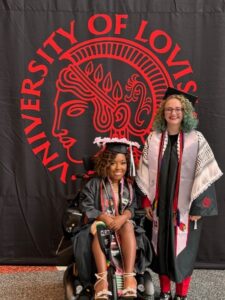
Gabrielle and another founder of Disabled Cards United. The first organization created at the University of Louisville by and for disabled students.
As I sit down to write about what it means to live as a Black woman with a disability, I’m struck by how impossible it feels to fully encapsulate my experience in just a few paragraphs. My story, like so many others, is layered and expansive, filled with moments of struggle, resilience, and joy. Yet, I hope these words will offer a glimpse into the realities of my life and the perspectives I’ve gained along the way.
Being a Black woman in this world already comes with a complex web of expectations and stereotypes. Add living with a disability, and the weight of intersectionality—the way our identities overlap and interact—creates unique barriers that society often overlooks. Kimberlé Crenshaw’s concept of intersectionality resonates deeply with me. It explains how the identities I hold as a Black woman with a disability don’t simply stack—they intersect, magnifying the challenges I face while simultaneously shaping my strength.
Navigating expectations and stereotypes
From a young age, I learned what it meant to fight against assumptions. My first memory of this was in third grade, during an emergency room visit. The doctor treating me casually assumed I was in I had an intellectual disability. His surprise when I explained that I was actually in my school’s advanced program stayed with me, though I didn’t fully understand the implications at the time. As I grew older, similar instances piled up—small moments that revealed how society often doubted my abilities because of my intersecting identities.
These experiences forced me to develop a strong sense of self-advocacy. By the time I reached college, this advocacy became a cornerstone of my identity. I encountered ableist professors who resisted providing accommodations and found myself advocating not just for my needs but for those of other students. In response, I co-founded the first organization for disabled students on campus, creating a space where we could empower one another and challenge the systems that ignored us.
The power of collective strength
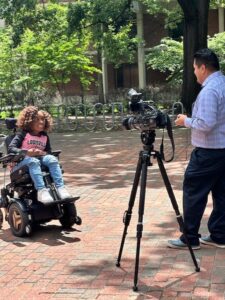
Gabrielle speaking to a local news station about her advocacy on campus.
Black women have always been trailblazers, carving out spaces in a world that was not built for us. From Fannie Lou Hamer to Maya Angelou, we have a long history of resilience and innovation. The disability community is no different. Connecting with other disabled individuals—especially other disabled Black women—has shown me the transformative power of collective strength.
Social media has played a pivotal role in building this community. Online platforms have given disabled Black women like me a space to share our stories, advocate for change, and educate others. Seeing others who reflect my experiences reminds me that I’m not alone—and that our voices are vital. These connections have become a source of strength, reminding me of the beauty and power that come from solidarity.
Finding joy amid challenges
Despite the hurdles, I’ve learned to find joy in the little things. Whether it’s through music, meaningful conversations with those who understand my journey, or moments of peace in my day, I celebrate every win—big or small. Joy, I’ve realized, is a form of resistance.
A call to action
To those outside of this experience, I urge you to educate yourselves and amplify the voices of disabled Black men and women. Our stories are as nuanced as they are powerful, and by listening, you can help create a more inclusive, compassionate world. Support looks like meaningful allyship: advocating for accessibility, challenging stereotypes, and creating spaces where everyone belongs.
To my sisters at this intersection, know this: you are loved, you are valued, and you are enough. Our journeys are not easy, but they are significant. Together, we continue to shape a world that sees us, values us, and honors the complexity of our lives. In doing so, we leave this world better than we found it.
Let’s keep moving forward, boldly and unapologetically.
Next Steps and Useful Resources
- For more information about the signs and symptoms of Spinal muscular atrophy (SMA), as well an overview of diagnosis and treatment concerns, an in-depth review can be found here.
- Browse MDA’s Mental Health Hub.
- MDA’s Resource Center provides support, guidance, and resources for patients and families. Contact the MDA Resource Center at 1-833-ASK-MDA1 or ResourceCenter@mdausa.org
- Stay up-to-date on Quest content! Subscribe to Quest Magazine and Newsletter.
TAGS: Ambassador Guest Blog, Ambassadors, College, College Experience, Community, Education, Relationships, Young Adults
TYPE: Blog Post
Disclaimer: No content on this site should ever be used as a substitute for direct medical advice from your doctor or other qualified clinician.


